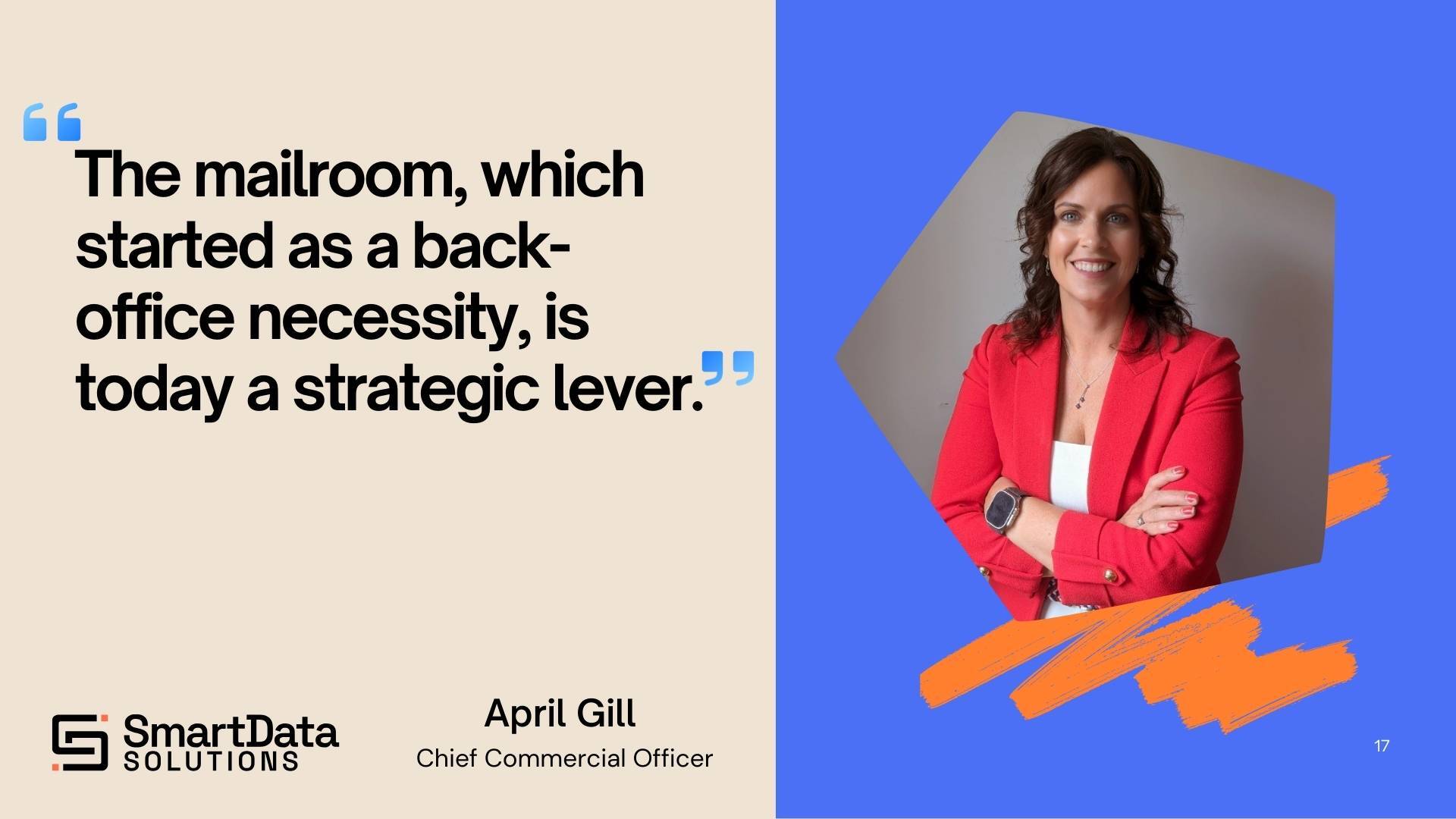The mailroom was once the beating heart of administrative operations, with stacks of envelopes, busy hands sorting paperwork, and teams manually keying in data. For decades, this analog, people-powered process formed the first link in the chain of healthcare delivery. But in a system where timing, accuracy, and efficiency directly impact care, that approach is no longer sustainable. The mailroom of today has undergone a dramatic evolution, emerging as a technology-enabled command center that accelerates workflows, reduces costs, and supports better outcomes.
From Paper to Pixels – A New Era of Intake
At the core of this transformation is digitization. Physical documents containing often unstructured data, such as claims, authorizations, appeals, and enrollments, are now scanned, categorized, and converted into structured digital formats to facilitate fast processing with extremely high quality. Sophisticated image capture tools ensure quality and precision, making even handwritten or complex forms usable without manual review.
Intelligent Data Capture: No More Manual Keying
Using optical character recognition (OCR), intelligent document processing (IDP), natural language processing (NLP), and machine learning, the modern mailroom captures and extracts relevant data elements automatically. Data such as member IDs, provider details, procedure codes, and more can be captured and transformed into electronic data interchange (EDI) standard transactions such as claims transactions (837s), electronic remittance advice (835s), enrollments (834s), and eligibility and claims status (270/271s and 276/277s). This eliminates the time-consuming, error-prone process of manual data entry, boosting both speed and accuracy.
Seamless Integration: Moving at the Speed of Healthcare
Captured data doesn’t just sit in storage; it’s transformed into actionable intelligence. Integrated systems route this information directly into downstream systems for claims adjudication, care management, prior authorization, appeals management, and member communications.
Digitally mature healthcare organizations are 2x more likely to process claims within SLA and report 30–50% fewer errors in downstream systems, according to industry benchmarks.
Organizations that implement intelligent capture and digital workflows can reduce document processing costs by up to 70% and cut turnaround times by as much as 80%. (AIIM & McKinsey)
This shift supports real-time decision-making and more timely care delivery.
Why It Matters: The Impact
This isn’t just about technology; it’s about outcomes. A digitized, intelligent mailroom enables health plans and providers to:
- Accelerate claims processing
- Improve timeliness and coordination of care
- Reduce administrative overhead and costs
- Enhance compliance and audit readiness
- Create a seamless experience for members and providers alike
Healthcare payers spend over $250 billion annually on administrative transactions. Automating intake and routing can cut those costs by 25-40%. (CAQH Index)
Looking Ahead
The mailroom may have started as a back-office necessity, but today it’s a strategic lever. By transforming how documents and data are received, processed, and routed, healthcare organizations can unlock new levels of efficiency, accuracy, and impact. In the future, those who lead in care delivery won’t just invest in better treatment, they’ll invest in smarter operations. And that begins where it always has: the mailroom. Only now, it’s digital.



